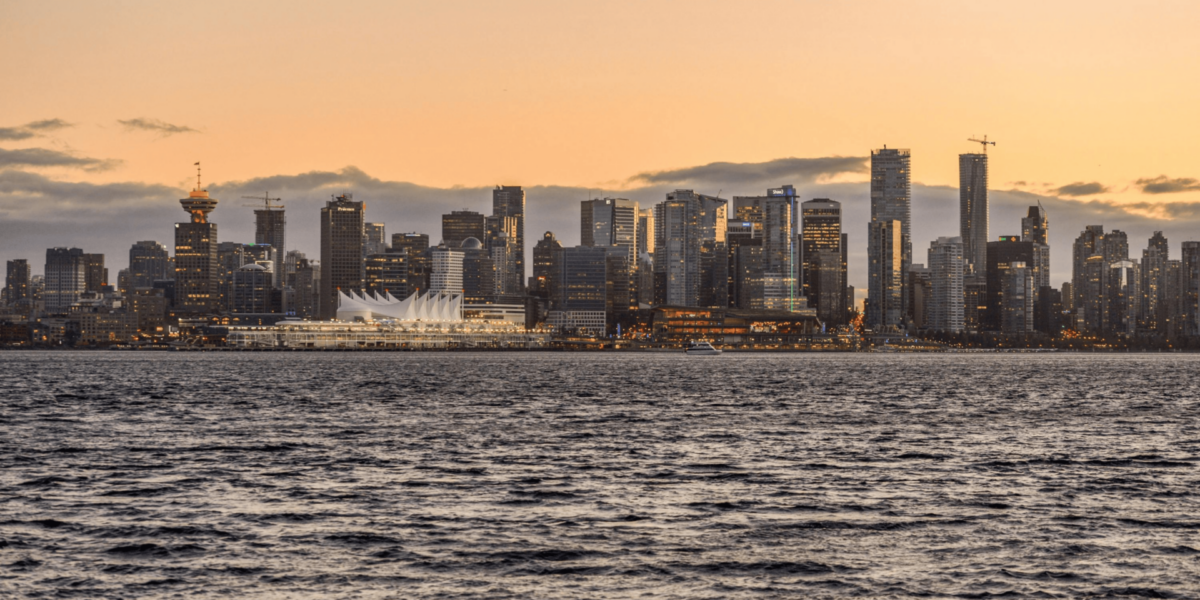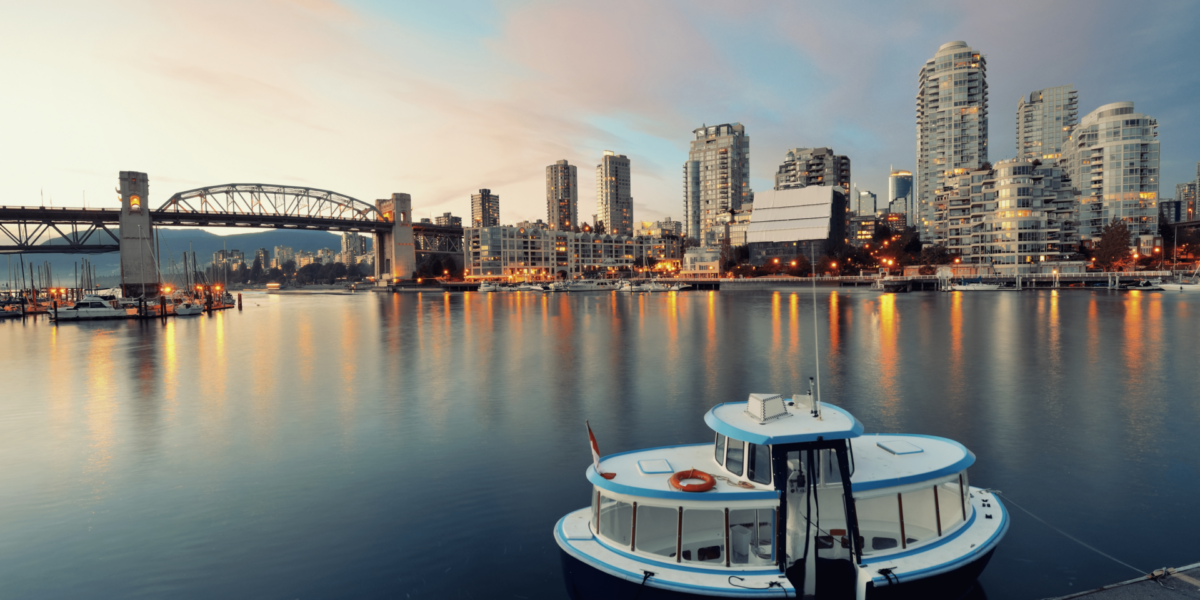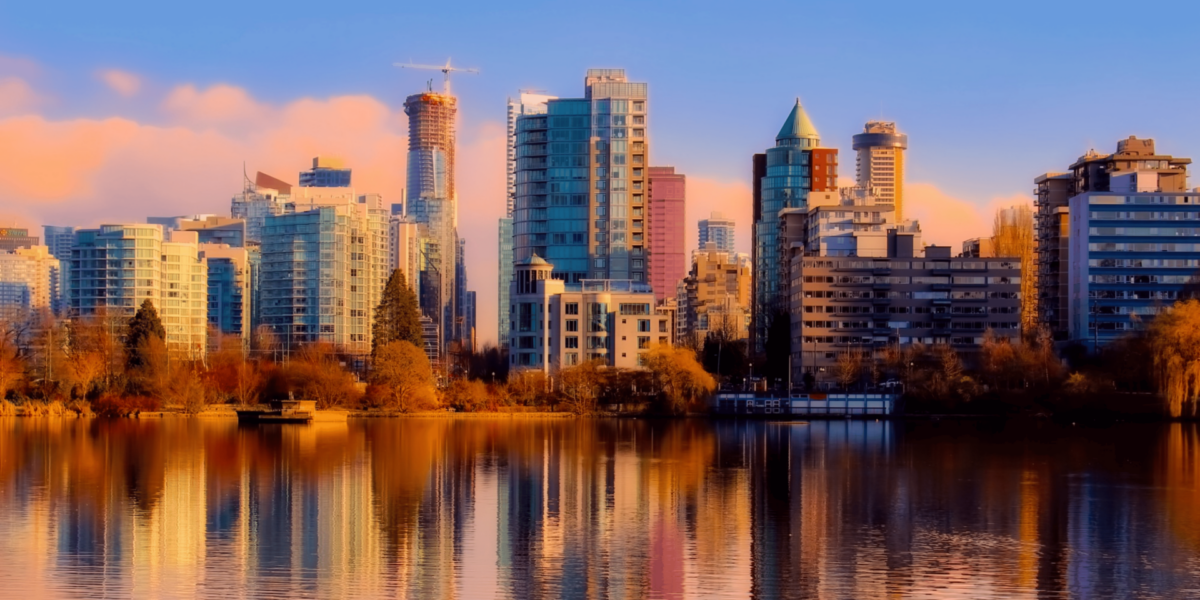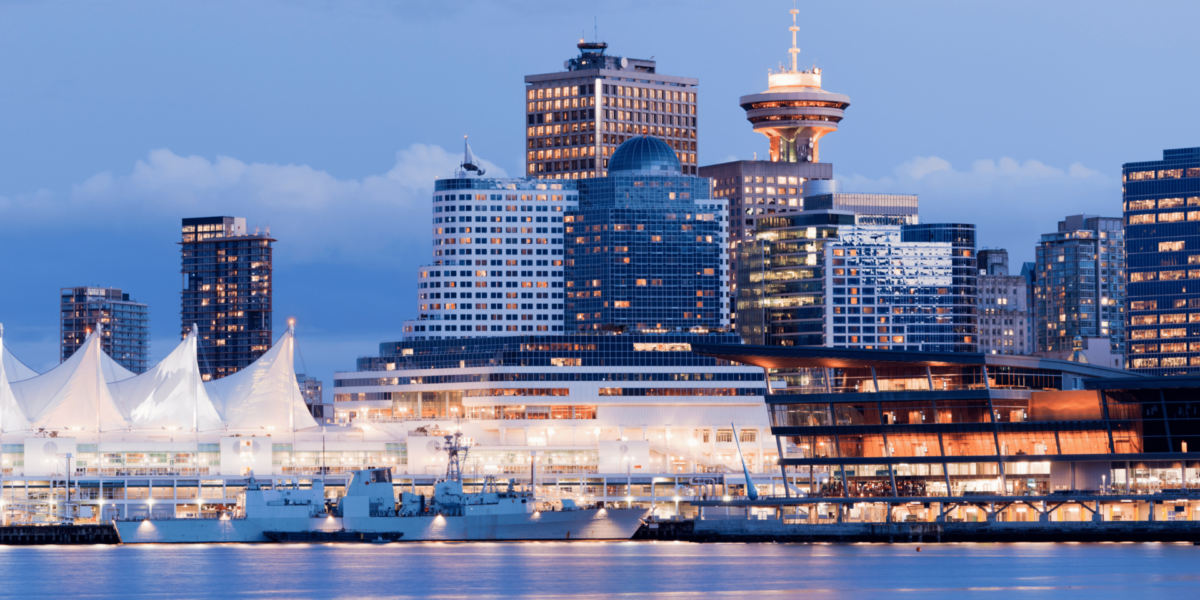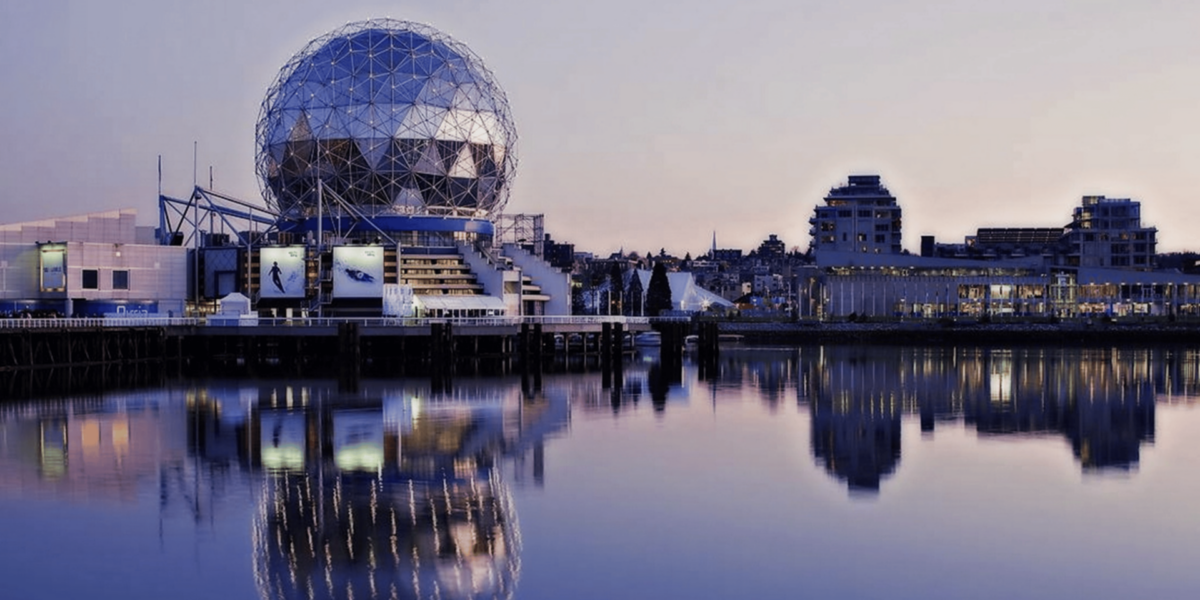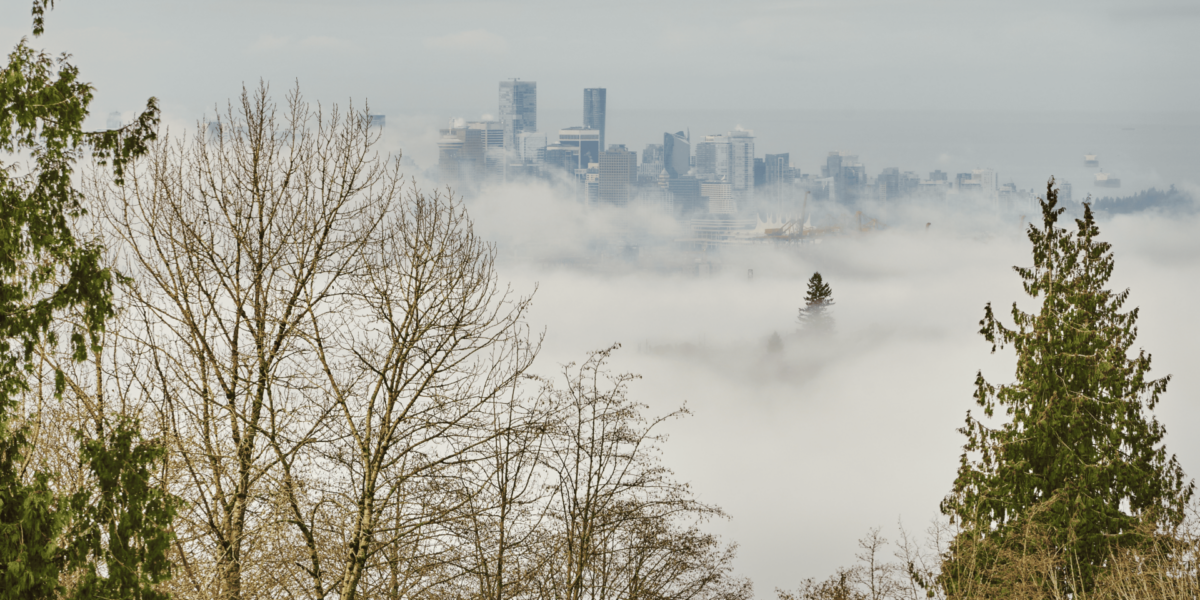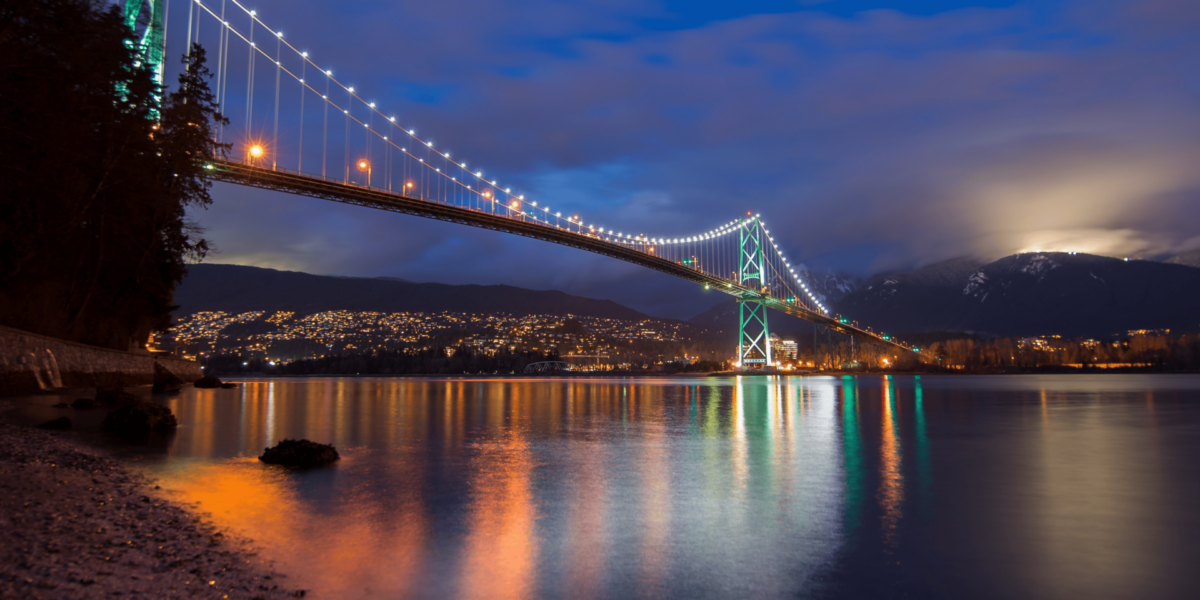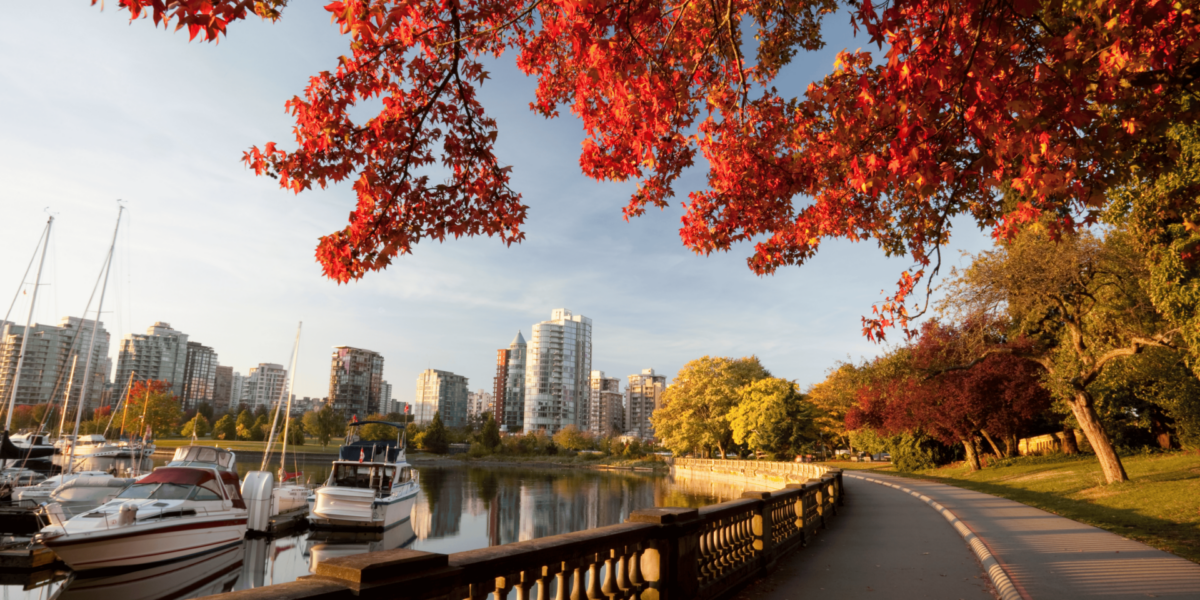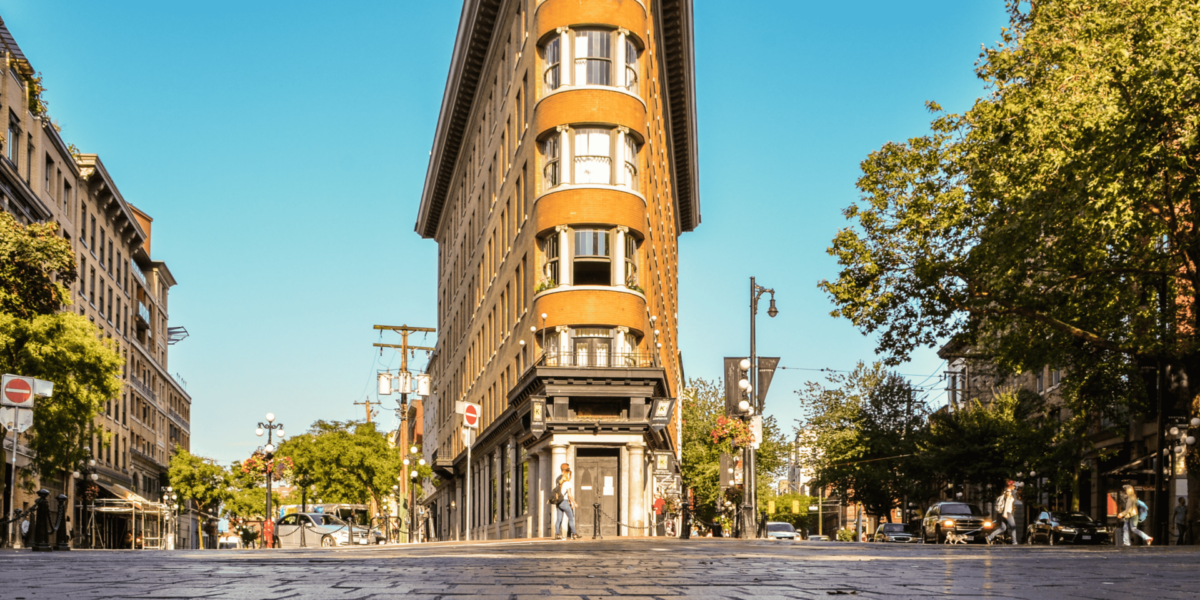The blue hour—the short window after sunset or just before sunrise—transforms the Vancouver waterfront. The sky shifts from light to deep blue, and city lights begin to glow. This change creates ideal conditions for capturing clean reflections across the water, giving the shoreline a cinematic tone that attracts photographers and walkers alike.
What Defines the Blue Hour in Vancouver
The blue hour occurs during twilight, when the sun is just below the horizon. In Vancouver, this brief time casts a rich blue tone across the sky and water. The remaining natural light mixes with artificial light from buildings, boats, and streetlamps, softening contrasts and enhancing clarity.
From the seawall, the skyline begins to glow as office towers light up. Streetlights flicker on along Coal Harbour. The water reflects both the sky and the structures around it, creating a balanced mirror that disappears once full darkness sets in. These moments offer some of the most photogenic conditions in the city.
How Waterfront Architecture Shapes Reflections
The waterfront includes a mix of modern glass buildings, piers, marina docks, and historical structures. This variety affects how light reflects. Glass towers mirror sky color, while wooden docks and metal railings cast textured reflections on the surface of the water. Boats moored at the marina break up the lines, adding visual layers.
Near Canada Place, the sails of the convention center pick up the fading sky tones. A person walking along the harbor may notice how each step changes the reflection. The angle, the light, and the water’s movement combine to create something new with every shift in position.
Why Still Water During Blue Hour Improves Image Quality
Calm water acts as a smooth surface for light during blue hour. Vancouver’s inlets and protected bays—especially False Creek and Coal Harbour—often stay still in the early morning and just after sunset. This stillness strengthens the reflections and reduces distortion caused by wind or boat traffic.
On a quiet evening, a slight breeze causes minor ripples, but the core of the reflection remains visible. In this low-light setting, the city’s lights stretch gently across the water. A long exposure on a tripod can capture the full gradient of blue fading into warm tones from surrounding windows.
Best Locations for Capturing Blue Hour Along the Waterfront
Vancouver’s waterfront offers several vantage points for observing or photographing the blue hour. The seawall path between Yaletown and Stanley Park provides open views and strong reflections. Olympic Village looks across False Creek toward the downtown skyline, offering a different angle with fewer visual obstructions.
Near Harbour Green Park, the water curves around the shoreline, creating long, uninterrupted reflections. A photographer might set up near the railing just after the sun dips below the North Shore Mountains. In this moment, the lights from surrounding condos begin to glow, and the blue deepens across the sky.
Timing and Weather Affect Blue Hour Photography
Blue hour varies in length depending on the season. In summer, it lasts longer due to extended twilight. In winter, it may pass in under 30 minutes. Weather also plays a role. Clear or lightly clouded skies offer the best results. Heavy fog or rain can mute colors and block reflective surfaces.
On a dry evening in September, the window of perfect light may last just long enough to capture a few sharp images. As darkness approaches, light fades quickly, and shadows lose detail. Planning ahead, arriving early, and monitoring weather apps can help you prepare to use this short window effectively.
Gear Tips for Shooting During Blue Hour
Capturing clean reflections during blue hour requires attention to gear and settings. Use a tripod to steady the camera during long exposures. A wide-angle lens allows more of the skyline and its reflection to fit in the frame. A remote shutter or timer reduces motion blur caused by camera shake.
Set a low ISO to avoid grain. Use a slower shutter speed—often several seconds—to pull in more light. Aperture between f/8 and f/11 provides enough depth of field while maintaining sharpness. A circular polarizer can help reduce glare, though it’s less effective in very low light.
Composing Images With Reflections in Mind
Reflections offer symmetry, but exact balance isn’t always necessary. Place the horizon just above or below the center of the frame to create more visual tension. Use leading lines, like railings or docks, to pull the eye through the image and into the reflection.
Near the Aquabus dock, the colorful ferry lights can be used to anchor the frame. With the right angle, they appear doubled in the water, surrounded by soft blue tones from the sky. Each light, color, and shadow has a mirrored counterpart—this relationship helps tell the visual story of a city winding down.
Editing Blue Hour Photos for Accuracy and Mood
Post-processing blue hour photos helps bring out the true feel of the moment. Adjust the white balance to emphasize cool tones without making them overly cold. Increase contrast slightly to define the difference between sky and reflection. Brighten shadows to restore detail in darker areas without flattening the image.
Avoid heavy saturation, especially in the blues. The goal is to maintain the natural gradient that gives blue hour its name. Add subtle clarity to sharpen reflections on the water’s surface, but leave the soft edges where the light begins to fade. This contrast helps keep the image true to what the eye saw in that quiet moment.
Experiencing the Blue Hour Without a Camera
Not everyone needs a camera to enjoy this time of day. The Vancouver waterfront during blue hour offers a break from noise and movement. Crowds thin out, wind slows, and the shift from day to night happens almost without notice. The stillness invites people to stop and observe—light reflects, colors deepen, and the city glows without words.
A person standing at the water’s edge near David Lam Park might not speak or move for several minutes. Their eyes follow the lights across the inlet. Buildings shine, water softens, and everything slows. That’s the power of blue hour—not just for photography, but for presence.

